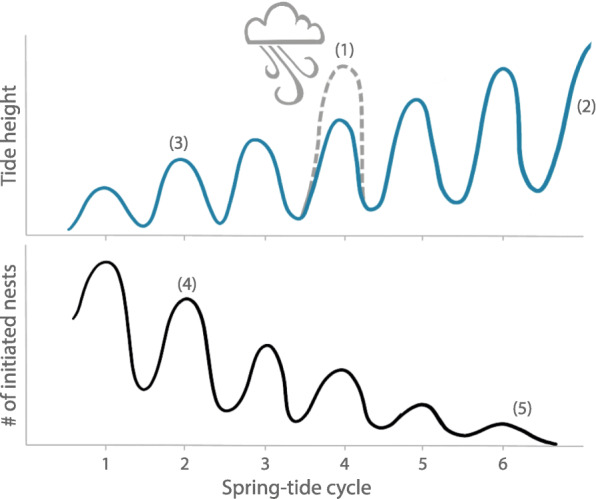Fig. 2.

Schematic representation of predictions for nesting phenology of Snowy Plovers at Bahía de Ceuta, Mexico. Numbers (1–5) indicate each prediction. Stochastic extreme weather events that occur in some years but not in others lead to unpredictable high spring tides (dotted grey line) causing between-year variation in nest flooding (1). Rising daily tide heights (undulating blue line) over the course of the laying season increase flooding of nests laid later in the season (2). Nests initiated around spring tide have a lower flooding risk than those initiated around neap tide because parents can place the nest in a safe distance from the highest water line (3). Semi-lunar variation in nest flooding will lead to adaptive nest initiation patterns that follow the semi-lunar spring tide cycle with more nests initiated around spring tide and less around neap tide (4). The semi-lunar periodicity in nest initiation will weaken as the season draws to its end since parents are pressed for time as the breeding site will be flooded at the end of the breeding season (5)
